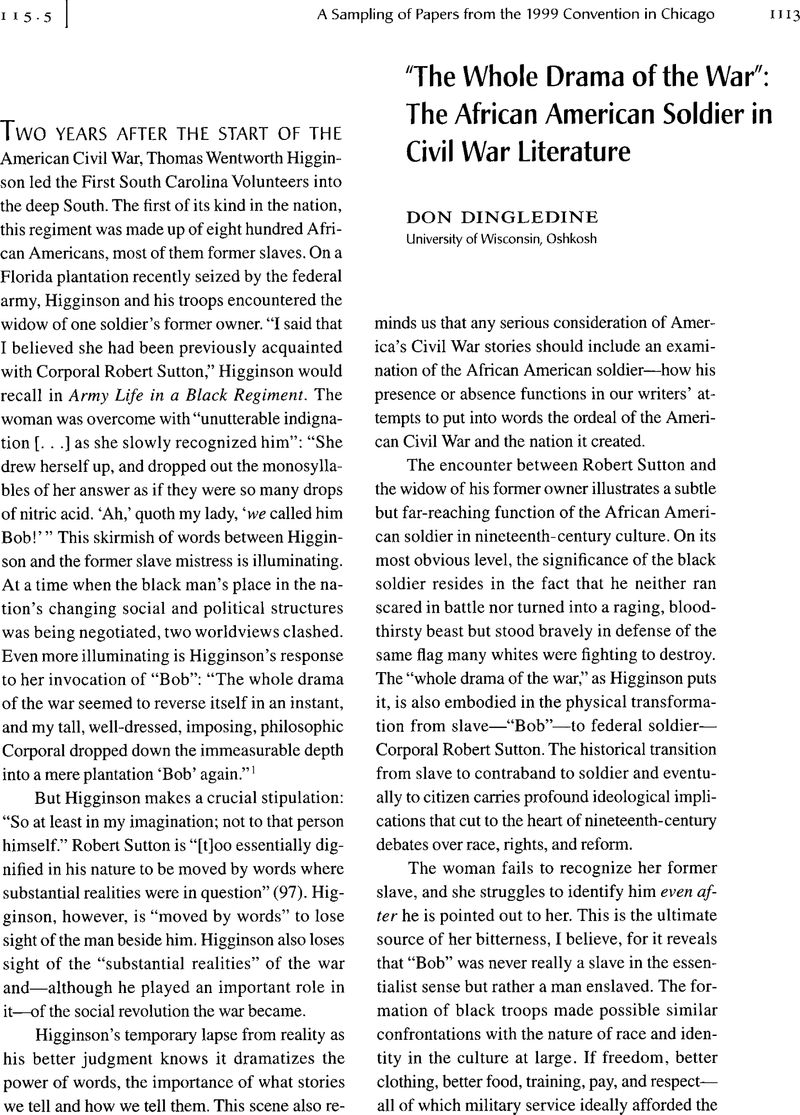No CrossRef data available.
Article contents
The Whole Drama of the War“: The African American Soldier in Civil War Literature
Published online by Cambridge University Press: 23 October 2020
Abstract

- Type
- Other
- Information
- Copyright
- Copyright © Modern Language Association of America, 2000
References
1 Thomas Wentworth Higginson, Army Life in a Black Regiment, introd. and preface by Howard N. Meyer (1870; New York: Norton, 1984) 97.
2 William Wells Brown, Clotelle; or, The Colored Heroine. A Tale of the Southern States (Boston: Lee and Shephard, 1867) 105.
3 William Wells Brown, letter to Gerrit Smith, 4 Sept. 1862, qtd. in William Edward Farrison, William Wells Brown: Author and Reformer (Chicago: U of Chicago P, 1969) 366.
4 Abraham Lincoln, letter to Michael Hahn, governor of Louisiana, 13 Mar. 1864, qtd. in W.E.B. Du Bois, Black Reconstruction in America, introd. David Levering Lewis (1935; New York: Atheneum, 1992) 157.
5 James Franklin Fitts, “The Negro in Blue,” Galaxy 1 Feb. 1867: 255.
6 Rebecca Harding Davis, Waiting for the Verdict, introd. Donald Dingledine (1867; Albany: NCUP, 1995) 247.
7 Frances E.W. Harper, Iola Leroy: or, Shadows Uplifted, introd. Hazel V. Carby (1892; Boston: Beacon, 1987).
8 I originally planned to include here a discussion of Stephen Crane's “The Monster,” which I read as stripping the heroism of African American troops of its radical potential by implying that the perfect soldier is little more than the perfect slave. But since, on the surface at least, Crane's novella isn't about the Civil War soldier, I skip this necessarily detailed and complex argument.
9 Thomas Wentworth Higginson, “The Shaw Memorial and the Sculptor St. Gaudens. Colored Troops under Fire,” Century June 1897: 199.




